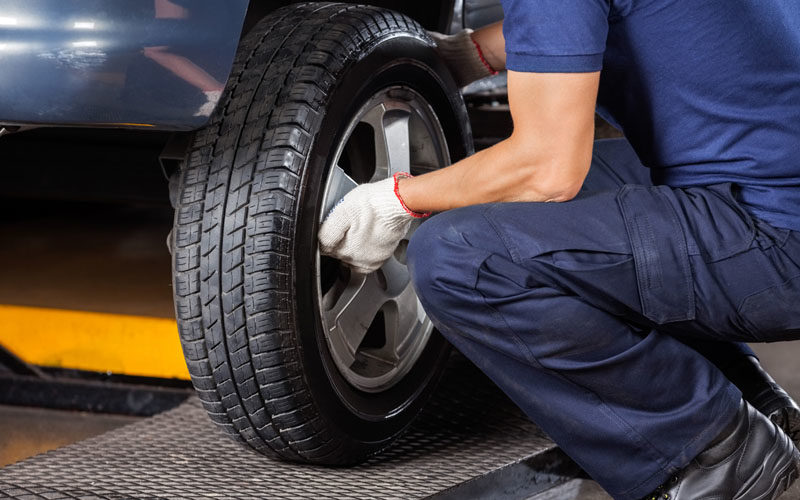
Tyre rotation is an important process that keeps your four Bridgestone Tyres Cheltenham in the best condition and will provide you with a smooth ride. But if you don’t know how to do it, why should you bother? Let’s make sure you keep up to speed on tyre rotation by finding out what is involved and then we’ll go through 10 things most people don’t know about the process.
Rotation Prevents Irregular Wear
The tyres on your car are subject to tremendous pressure, which is why the tyre walls must be completely round when inflated. At some point, however, the material of the tyre wall will become more pliable at one spot than another. Over time this creates a flat spot with little or no tread left. A rotation will ensure that all four tyres have as much tread as possible at any given time and thus reduce the chances of irregular wear occurring due to one flat spot being subjected to excessive stress from road friction.
It Reduces Fuel Consumption
In addition to preventing uneven tyre wear, rotating tyres also increases their longevity, so you won’t need to replace them as soon as a problem starts to get worse. This is very important from a financial point of view, but it also positively affects the environment. Every time you replace your tyres with fresh ones. This is another opportunity to save fuel because your car will need less horsepower to move its increased weight around.
It Increases Safety
Safety benefits are perhaps the most significant reason for rotating tyres regularly, not only for the increased grip that comes from increased tread depth but also because even wear can cause dangerous vibrations at high speed, leading to tyre failure and an accident.
When to Rotate Tyres?
Regular rotation should take place every 7500 miles or ten months – whichever comes first! However, irregular driving habits may mean you need to rotate your tyres more often than every ten months, so keep an eye on how your tyres wear.
It’s Safe to Do it Yourself
You don’t necessarily need the help of a trained mechanic to rotate tyres at home. As long as you follow some basic guidelines like having the right tools (a jack and two-axle stands), for example, you can do it safely and easily by yourself.
You Cannot Rotate All Types of Tyre
All cars come with cross-ply or radial tyres – which one is fitted depends on the year of manufacture nearly always. There are also specialised tyres that require specialist equipment to be installed correctly. So please check before attempting to rotate tyres if in doubt.
Spare Wheel Rotation is Possible
You can also rotate your spare wheel with the other four tyres if you want to. But it’s always best to wait until you’ve got a flat tyre before swapping them over. This will save you time and means that the spare is packed with little or no mileage.
You can ‘Save’ Irregular Wear for Later
We recommend rotating tyres every 7500 miles (or ten months) because this ensures each tyre has an equal amount of tread and wears down at a similar rate. However, if you get some irregular wear and don’t feel like getting it fixed right away,. There is no need to worry. Just rotate the affected tyre to one of the others and carry on driving normally!
Walk to the Wheel
If you’re rotating your tyres yourself, it’s a good idea to keep an eye on them as you go. This means that as you change into the fresh tyre. Take a walk around the car and check for any that might need attention before driving off. It may take much longer if you have to make a return visit after finding a problem.
Remember Where They Came From!
This one seems simple enough but many people don’t realise that when it comes to tyre rotation. Each side of the car has its specific number of turns for each wheel to end up in its designated position! For example, if you have four tyres, two will have been fitted with their treads facing towards the front of the car and two towards the back. If you rotate them forward by 90 degrees, none of your tyres will be in the correct position anymore!
So it’s very important to turn each tyre a quarter turn every time you do this job. Otherwise, it could result in poor performance and an accident if you forget.
Thanks for reading – we hope this post helps shed some light on why regular Car Tyres Cheltenham rotation is so important and saves you money and hassle in the future!







